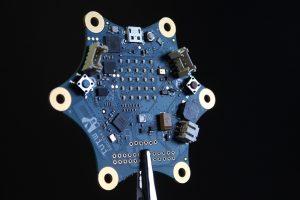Smart Dust Processors: Invisible Computing
The invention of Smart Dust Processors has revolutionized the world of computing, paving the way for a new era of invisible computing. This cutting-edge technology has the power to transform everyday objects into intelligent devices, enabling them to seamlessly integrate into our daily lives. Smart Dust Processors are minuscule, wireless, self-sufficient computers that work together to perform complex tasks. They are the key to creating a truly connected world, enabling us to make smarter decisions and enhancing our productivity. In this article, we will explore the world of Smart Dust Processors and how they are shaping the future of computing.
The Evolution of Computing
From the large mainframe computers of the 1960s to the personal computers of the 1980s, and the emergence of smartphones in the 2000s, the evolution of computing has been remarkable. However, with the rise of the Internet of Things (IoT) and the need for more efficient and seamless connectivity, a new form of computing was needed. This led to the development of Smart Dust Processors.
Smart Dust Processors, also known as “motes”, are tiny, wireless computing devices that are about the size of a grain of sand. They consist of a microprocessor, sensors, wireless communication capabilities, and a power source, all packed into a small, self-contained package. These processors can be placed on or around objects, allowing them to gather and transmit data to a central system for processing and analysis.
The Inner Workings of Smart Dust Processors
At the core of every Smart Dust Processor is a microprocessor. This acts as its brain, responsible for processing data and executing tasks. The sensors within the processor help in collecting various types of data such as temperature, humidity, light, and sound. These sensors can be customized depending on the intended purpose of the processor. For instance, in a smart home setting, the processor may have sensors to measure temperature, humidity, and air quality.
The wireless communication capabilities of Smart Dust Processors allow them to connect and communicate with each other, forming a network of processors. This network is known as the “mesh network”. It enables the processors to share data, communicate with other devices, and work together to perform complex tasks. This communication can happen through various wireless protocols such as Wi-Fi, Bluetooth, or Zigbee, depending on the application and environment.
One of the most impressive features of Smart Dust Processors is their ability to be self-sufficient and operate autonomously. They are equipped with a power source such as a battery or solar cells, allowing them to function without the need for external power. This makes them ideal for use in remote or hard-to-reach locations.
The Applications of Smart Dust Processors
The potential applications of Smart Dust Processors are endless. They have the ability to transform ordinary objects and environments into smart and connected systems, impacting various industries including healthcare, agriculture, transportation, and manufacturing.
In healthcare, these tiny processors can be used to monitor patients’ vital signs, track medication adherence, or even assist in surgeries. In agriculture, they can help to optimize crop growth by monitoring soil moisture and nutrient levels. In the transportation industry, they can be used to track the location and condition of goods during transportation. In manufacturing, they can improve efficiency by monitoring equipment health and predicting maintenance needs.
The Advantages of Invisible Computing
The use of Smart Dust Processors has the potential to bring about a paradigm shift in the way we interact with technology. It enables the concept of “invisible computing”, where technology fades into the background and becomes seamlessly integrated into our lives. This will give rise to a more intuitive and efficient way of interacting with our environment.
Invisible computing also has the potential to reduce our carbon footprint. With the use of tiny processors, there will be a decrease in the need for large, energy-consuming devices, resulting in a more sustainable approach to technology.
The Future of Smart Dust Processors
The technology of Smart Dust Processors is constantly evolving, with more advanced versions being developed. Researchers are exploring ways to improve their capabilities, such as increasing their range, improving energy efficiency, and enhancing their processing power. There is also ongoing research on the use of nanotechnology to make these processors even smaller, allowing for new and innovative applications.
The possibilities of Smart Dust Processors are limitless. They have the potential to bring about significant changes in the way we live and work. As this technology continues to develop, we can expect to see an even more connected and intelligent world.
In Conclusion
The advent of Smart Dust Processors has given rise to the concept of invisible computing, where technology blends seamlessly into our surroundings. These tiny processors are transforming everyday objects into intelligent devices, enabling them to communicate and work together to improve our lives. The applications of this technology are vast and have the potential to impact various industries. As we continue to make advancements in this field, we can expect to see a more connected, efficient, and sustainable future driven by Smart Dust Processors.










